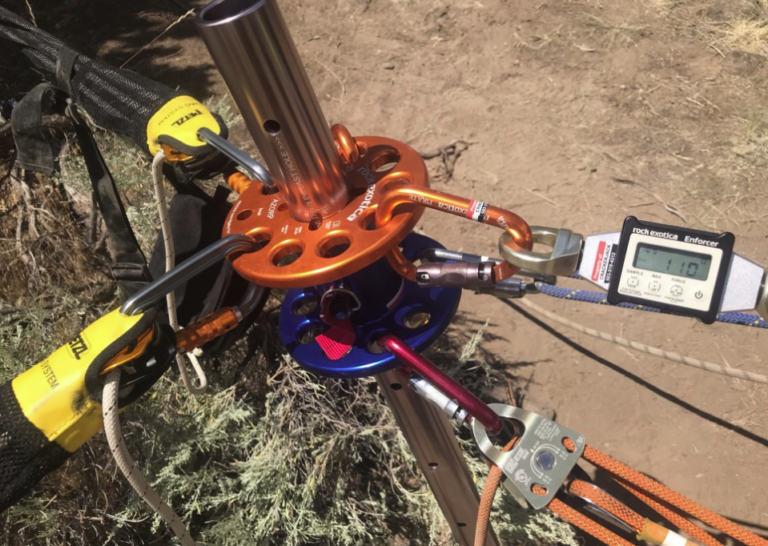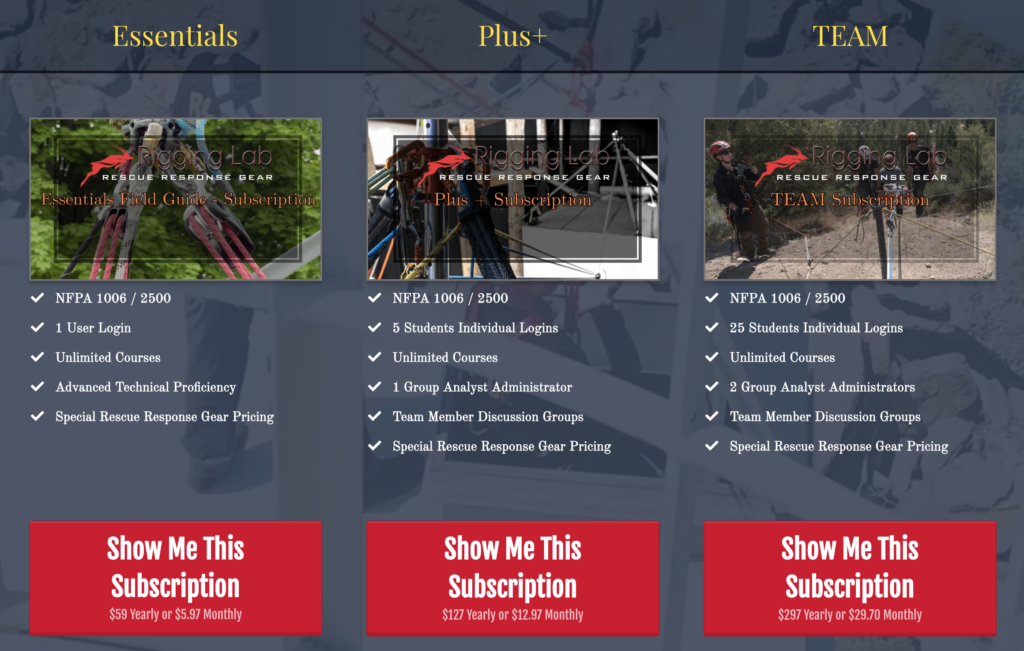Anchors are the foundation of any rope rescue operation, providing the stability and support needed to safely conduct rescues. Mastering anchors in rope rescue operations involves an in-depth understanding of various aspects, ensuring thorough coverage of all key points.
Mastering Bombproof Anchors
Establishing bombproof anchors is fundamental to ensuring safety and success in technical rope rescue operations. Key considerations include:
- Load Capacity Assessment: Determine the maximum load the anchor must support, accounting for rescuers, victims, and equipment.
- Anchor Placement: Strategically place anchors for maximum stability, using robust natural formations or engineered fixtures.
- Redundancy: Incorporate multiple anchors to create a redundant system, ensuring that if one anchor fails, others can take the load.
- Anchor Equalization: Use load-sharing knots and slings to distribute the load evenly among all anchors, preventing overloading of a single point.
- Anchor Integrity: Regularly inspect anchors for wear, corrosion, or damage to maintain safety.
- Dynamic Forces: Plan for dynamic forces during rescues, which can exceed static loads.
- Material Selection: Choose anchor materials suitable for the environment, considering factors like corrosion resistance and strength (Rigging Lab Academy) (Rigging Lab Academy).
8 Point Search for Rescue Rigging Anchors
The 8 Point Search method provides a structured approach to finding and validating anchor points:
- Visual Inspection: Look for cracks, decay, or rust.
- Physical Testing: Apply moderate force to ensure stability.
- Environmental Assessment: Evaluate for loose soil, water flow, or shifting debris.
- Redundancy Planning: Identify multiple potential anchor points.
- Load Testing: Gradually apply weight to simulate expected loads.
- Anchor Point Marking: Mark identified points for efficiency.
- Documentation: Record conditions and suitability for future use.
- Regular Reassessment: Continuously evaluate anchor points, especially with changing conditions (Rigging Lab Academy).
Elevated Anchors
High directional anchor systems are essential for complex rescues where traditional ground anchors aren’t feasible:
- Equipment Selection: Use systems like the Arizona Vortex, ensuring all components are rated for expected loads.
- Stability and Security: Secure the base to prevent tipping or shifting, using additional guy lines if necessary.
- Rigging Techniques: Employ advanced techniques to maintain stability, such as proper tensioning and using rigging plates.
- Training and Proficiency: Regular training is crucial for quick and safe setup.
- Safety Checks: Thoroughly check all connections and tension before use (Rigging Lab Academy).
Staggering Rigging Anchors
Staggering anchors can increase efficiency but requires careful consideration:
- Efficiency Gains: Spread mechanical advantage systems to reduce resets and increase efficiency.
- Force Distribution: Distribute forces more evenly, reducing risk of failure.
- Complexity: Manage increased setup complexity through additional training.
- Safety Risks: Conduct thorough safety checks to manage risks associated with complexity (Rigging Lab Academy).
Marginal Anchors
Marginal anchors, while less robust, can be valuable in certain situations:
- Combining Multiple Anchors: Use multiple points to create a stable system.
- Load Sharing: Ensure even distribution to reduce risk of failure.
- Environmental Considerations: Assess factors like soil composition and weather.
- Continuous Monitoring: Regularly check anchors during operations (Rigging Lab Academy).
Removable Anchors
Removable anchors offer flexibility and adaptability:
- Portability: Easily transported for use in various locations.
- Versatile Applications: Suitable for urban environments or temporary structures.
- Ease of Installation: Quick to install and adjust.
- Training Requirements: Proper training to ensure safe use (Rigging Lab Academy).
Multi-Point Anchors
Multi-point anchor systems enhance stability in complex rescues:
- Selection and Testing: Choose and test each anchor point for strength and stability.
- Connection Techniques: Use rigging plates and equalization methods to connect points.
- Load Distribution: Evenly distribute load across all points.
- Training and Practice: Regular practice to ensure efficient setup during rescues (Rigging Lab Academy).
Enhancements for a Truly Comprehensive Guide
To meet the comprehensive definition, the blog should:
- Include Detailed Case Studies and Examples: Real-world examples enhance understanding and practical insights.
- Provide Step-by-Step Guides and Visual Aids: Detailed instructions with diagrams and images clarify complex setups.
- Incorporate Advanced Techniques and Latest Trends: Cover advanced anchoring techniques and the latest developments.
- Offer Training Programs and Safety Protocols: Detailed programs and protocols ensure thorough preparation.
- Utilize Interactive Content and Multimedia: Quizzes, simulations, and video tutorials engage readers and reinforce learning.
- Continuously Update Information: Regular updates ensure content reflects current best practices.











